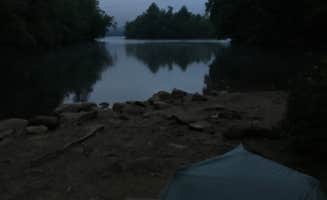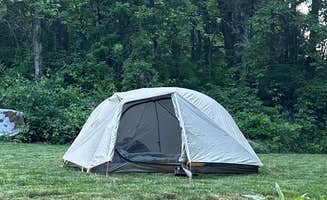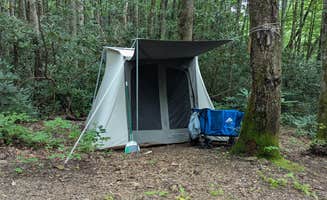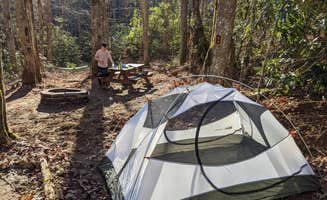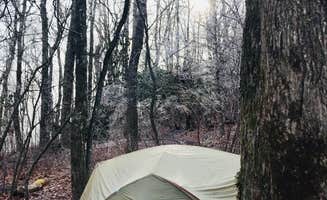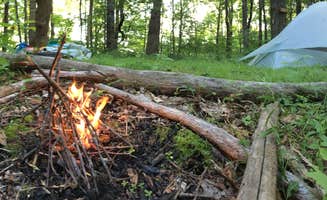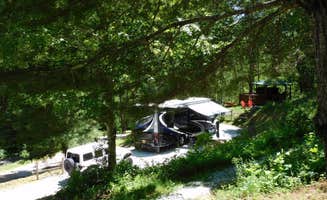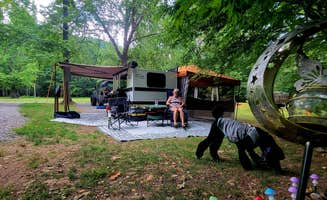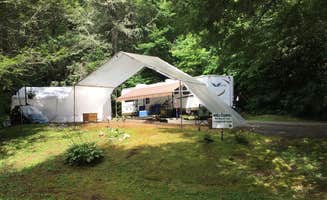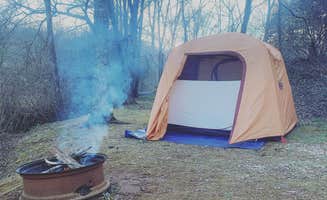Nantahala National Forest spans 531,270 acres across western North Carolina's Appalachian Mountains, with elevations ranging from 1,200 to 5,800 feet. Camping opportunities vary dramatically with these elevation changes, creating distinct temperature zones and diverse ecological settings. Roads to many Nantahala National Forest campsites remain unpaved, requiring vehicles with adequate clearance during wet conditions.
What to do
Mountain biking at Tsali Recreation Area: Four loop trails totaling 42 miles alternate between bike and horse use days. "Great location right on Trail system. Hot showers, clean toilets," notes one visitor at Tsali Campground.
Hiking to panoramic views: Siler Bald offers a challenging but rewarding backcountry experience with 360-degree mountain vistas. "The hike can be pretty steep at points so be prepared and of course this is only a backpacking site," reports a Siler Bald camper.
Paddling Lake Chatuge: Access water activities directly from lakeside camping spots. "The water is almost crystal clear, and most sites are on the lake. It's also only about 20 minutes from Bell mountain, which is a must see for the views of Lake Chatuge and the surrounding mountains," writes a visitor to Jackrabbit Mountain.
Exploring abandoned vacation homes: The Daisy Town ghost town at Elkmont contains historic summer cottages. "The campground has a wonderful area and the history of the place is amazing," explains a camper who stayed at Elkmont Campground.
What campers like
Creek sounds for sleeping: Many Nantahala campsites feature water proximity that creates natural white noise. "We could hear the stream from our site at night. Exactly what we were looking for," shares a visitor to Standing Indian Campground.
Free primitive camping options: No-cost dispersed sites exist throughout the forest. "Each has a picnic table, fire pit/grill, and level area for 1-2 tents, and lake views (most have lake access if you want to put in a kayak or canoe). Sites are so spread out it feels like you're the only one on the lake," reports a camper at Long Hungry Road Dispersed Campsites.
Spacious group facilities: Designated areas accommodate larger gatherings with pavilions. "Appletree was a wonderful campsite with lots of room and area to camp. There was also a large field next to the camping area that could be used for various activities," notes a visitor to Appletree Group Campground.
Clean facilities despite remote locations: Many campgrounds maintain surprisingly good bathhouses. "The bathhouses and campground are very clean. No dish washing station nearby. Garbage dumpster is between A and B loop in the side of the camp road," writes a Jackrabbit Mountain camper.
What you should know
Limited or no cell service: Communication options remain minimal across most of the forest. "This site is very remote with no cell service. Make sure you download a google map 'offline mode' map of the area before coming, since service is limited for ATT and Verizon," advises a visitor to Turkey Creek Campground.
Seasonal operations: Most campgrounds close during winter months. "Open April 1 through October 1," notes a Jackrabbit Mountain camper.
Alternating trail usage days: Some trail systems restrict mountain biking to specific days. "As a flatlander I love to come to tsali to get my legs into shape for the mountains. After a week here you'll be ready for even more challenging Trails," shares a Tsali visitor, where trails alternate between bike and horse days.
Advance reservations required at popular sites: Book early for peak periods. "Be sure to reserve far in advance, as this is a very popular campground! Great sites, and a short drive to Tsali Rec area," advises a Turkey Creek visitor.
Tips for camping with families
Seek creek-side sites for natural play areas: Flowing water provides entertainment for children. "The headwaters of the Nantaha River flow through the campground providing a gathering place for families to enjoy playing in a cold mountain stream," explains a Standing Indian Campground visitor.
Consider drive-in campsites with nearby hiking: Families can establish a comfortable base camp while enjoying trails. "Beautiful campground. Not extremely private as the sites are beside each other without trees and anything to seperate. Creek runs throughout park. Bathrooms are clean and accessible," writes a camper at Standing Indian.
Look for campgrounds with fields for activities: Open spaces offer room for games. "Near the campsites is a large field that all the kids ran in from sunrise to sunset," notes a visitor to Appletree Group Campground.
Visit during firefly seasons: Certain times bring natural light shows. "The open field lights up with fireflies at dusk- its like a mini fireworks show," shares a Turkey Creek camper.
Tips from RVers
Check road conditions and access: Many forest roads present challenges for larger vehicles. "The entrance to this park is right across the street to an entrance to the Appalachian Trail. The road to this campground is very narrow, the hill is very steep, and there is at least one very tight hairpin turn," warns a visitor to Standing Indian.
Consider smaller rigs for forest camping: Compact setups navigate better on narrow mountain roads. "Smaller camp grounds, that best suited for smaller campers, or tent camping. The driveway coming into the campground is steep, so drive slow, and I would highly recommend showing up before dark," advises a Turkey Creek visitor.
Plan for limited hookup options: Full hookups remain scarce throughout the forest. "I would call it more of a small creek, but still nice. All the gravel roads seem to be in great condition. Washer and dryers are available, and showers and bathrooms are way better than average," notes a Turkey Creek camper.
Bring sufficient water storage: Many sites lack individual connections. "Has water and electric available. There is a camp store with the essentials and firewood available for purchase. Bathrooms are really clean. The sites are moderately sized with some trees for privacy," shares a Turkey Creek visitor.


